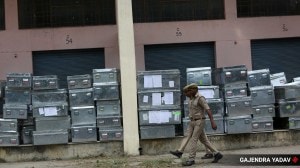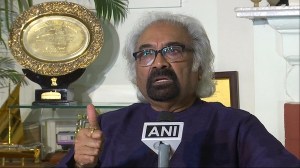- India
- International
Analysis of Railways data: Tariff hike cannot be principal strategy to address losses, says NITI report
The report, an analysis of Railways data prepared by the Aayog’s member economist Bibek Debroy says Railways overstates its losses from “social obligations” by Rs 6,000 crore per year.
Indian Railways overestimates its losses from low fares and social service obligations thanks to the way it reads its own data, its pricing of AC services is higher than equivalent AC bus services and tariff hike cannot be the principal strategy to address such losses, a NITI Aayog report said on Wednesday, barely a week after the transporter hiked its fares across all premium trains.
The report, an analysis of Railways data prepared by the Aayog’s member economist Bibek Debroy says Railways overstates its losses from “social obligations” by Rs 6,000 crore per year.
“IR’s estimates indicate that financial impact of under-recoveries due to lower tariff in non-suburban services is expected to be around Rs 28,000 crore, while the review indicates that this could more reasonably be around Rs 22,000 crore considering the competitive market dynamics in estimation,” the report said while taking transporter’s data up to 2014-15 as test case. The report indicates that the way Railways computes its input costs is not reflective of the actual cost of per unit of service offered.
It says Railways computes costs of delivering service across classes through fully distributed cost approach. This approach, the analysis says, captures the entire direct and indirect system costs of a railway system and then the costs are distributed to various heads on the basis of ratios and drivers of such heads. “It does not reflect the marginal cost approach that would indicate the cost IR incurs for providing a particular unit of service. For example, it is difficult to compute precisely the unit cost IR incurs to provide AC1, AC2 or AC3 class of services,” it says. In other words, Railways’ stretches input costs to a point that it makes the under-recovery due to low tariffs look larger than they may actually be.
Inefficiency, the analysis says, in cost structure also significantly contributes to the losses in passenger service business and hence tariff hike cannot be the only mechanism to address such social costs. It has to be complemented by cost optimisation and non-fare box revenue enhancement strategies with varying levels for various classes.

The analysis questions the Railways’ method of explaining its own data. The report says the losses Railways shows in AC classes could be because of higher base cost structure more than the low fares. For sleeper and second class services, Railways over-estimates the quantum of losses that could be attributable to lower tariff levels.
“Analysis shows that 20 per cent more losses in sleeper and non-AC services are on account of Railways’ cost structure and not lower tariffs,” Debroy told The Indian Express.
Railways has shown the cost of its social service obligation and low tariffs to be around Rs 33,000 crore. Railways is trying to move to accrual accounting system, but the project is hit by slow pace. The report says that in the present context, when Centre is considering to merge the Rail Budget with the General Budget, a need is being felt to examine the financial impact of social service obligations in the passenger transport business.
The analysis has taken into account average pricing patterns of premium AC bus fares and non-premium bus fares of certain routes where they is competition to the Railways, like Delhi to Chandigarh, Lucknow, Ahmedabad; then Mumbai to Nagpur and Hyderabad to Bengaluru. However, as quality of service levels is an important input, air transport has been kept out as a competing mode for these sectors. This means that how much IR can charge (in rupees/passenger/km) for any particular class is determined by tariff levels for competing modes.
Going by that comparative analysis with bus, the AC classes charge much more while the non-AC classes charge less than their roadways counterparts, it says. In non-AC classes, the potential under-recovery (comparatively) is as much as 60 per cent in Sleeper and 99 per cent in General compartments. However, it adds that for non-AC segment, railways may provide a better travel experience than roadways. By the same indicators, the AC classes in these sectors has the scope to decrease fares to be competitive with the roadways, hypothetically.
The report makes a mention of the freight business saying the “distortions” in freight rates, wherein freight is charged high should be avoided as it is “unhealthy for the economy” as the rates are ultimately passed on to consumers through higher costs of electricity, cement, steel etc.
Apr 24: Latest News
- 01
- 02
- 03
- 04
- 05







































